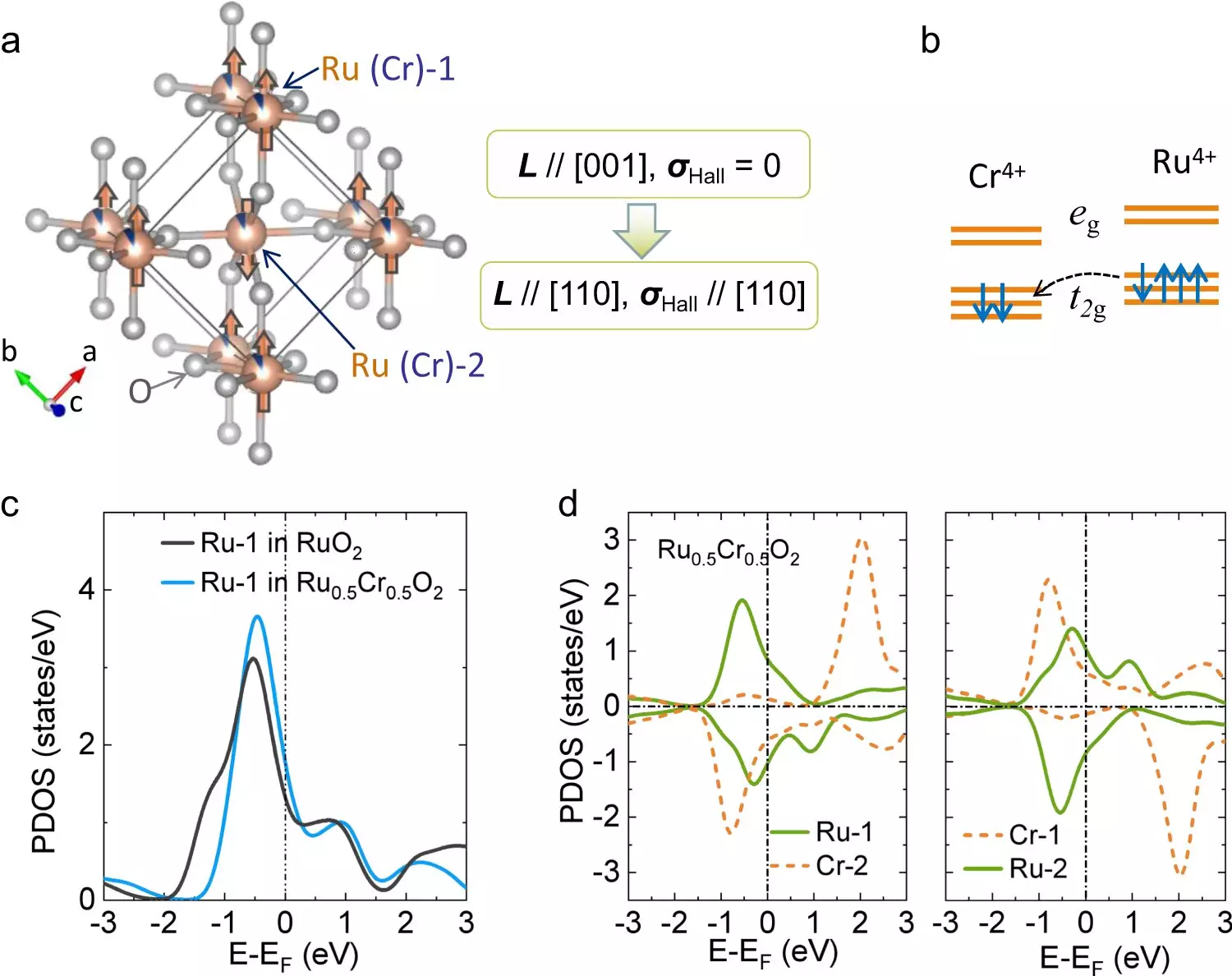In a recent study published in Nature Communications, RIKEN physicists have introduced a new magnetic material that has the potential to revolutionize computer memory storage. This breakthrough could lead to higher memory density and faster memory writing speeds compared to conventional memory devices currently in use.
The Problem with Ferromagnets
Memory devices like hard disks typically utilize ferromagnetic materials such as iron and cobalt to store data. However, these materials are not without their drawbacks. One of the main issues with ferromagnets is that neighboring areas can interfere, leading to spontaneous magnetization that can corrupt stored data. This limitation restricts the achievable memory density in such devices.
Antiferromagnetic Materials to the Rescue
To address these challenges, researchers have turned their attention to antiferromagnetic materials. Unlike ferromagnets, antiferromagnets have magnetic fields of adjacent atoms that tend to align in opposing directions. This unique property makes antiferromagnetic materials promising candidates for improving data storage technology.
The Anomalous Hall Effect
Physicists have long speculated that certain antiferromagnetic materials could exhibit a phenomenon known as the “anomalous Hall effect.” This behavior could potentially be leveraged to manipulate electrons within antiferromagnetic materials for data storage and retrieval purposes.
In a significant breakthrough, Meng Wang and his team at the RIKEN Center for Emergent Matter Science have successfully demonstrated the anomalous Hall effect in an antiferromagnetic metal comprising of ruthenium and oxygen. What sets this discovery apart is the fact that no external magnetic field was required to observe this effect.
The simplicity of the crystal structure in the antiferromagnetic metal makes it particularly attractive for practical applications. Additionally, the ease of fabricating thin films using this material further enhances its potential for widespread adoption in memory storage devices.
The development of this new magnetic material marks a significant milestone in the field of computer memory storage. By harnessing the unique properties of antiferromagnetic materials and leveraging the anomalous Hall effect, researchers are paving the way for a new era of memory devices with higher storage capacities and improved performance. With further advancements in this area, we can look forward to a future where data storage is faster, more reliable, and more efficient than ever before.


Leave a Reply